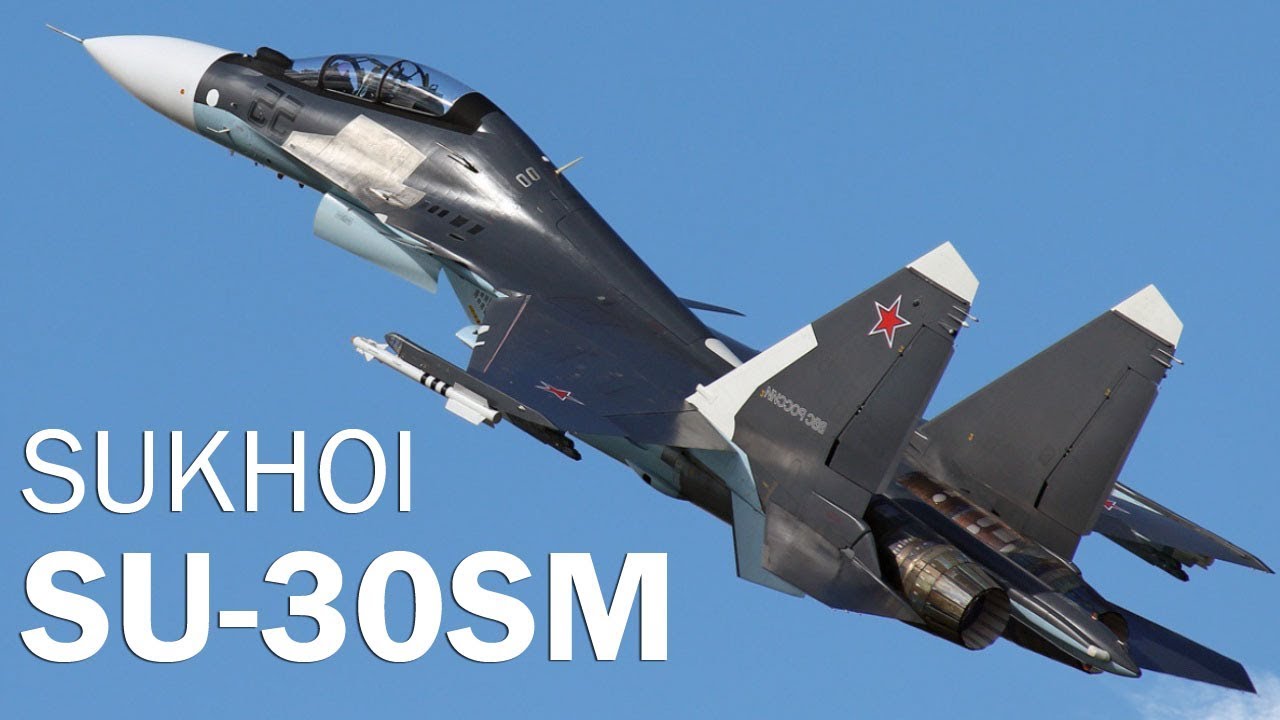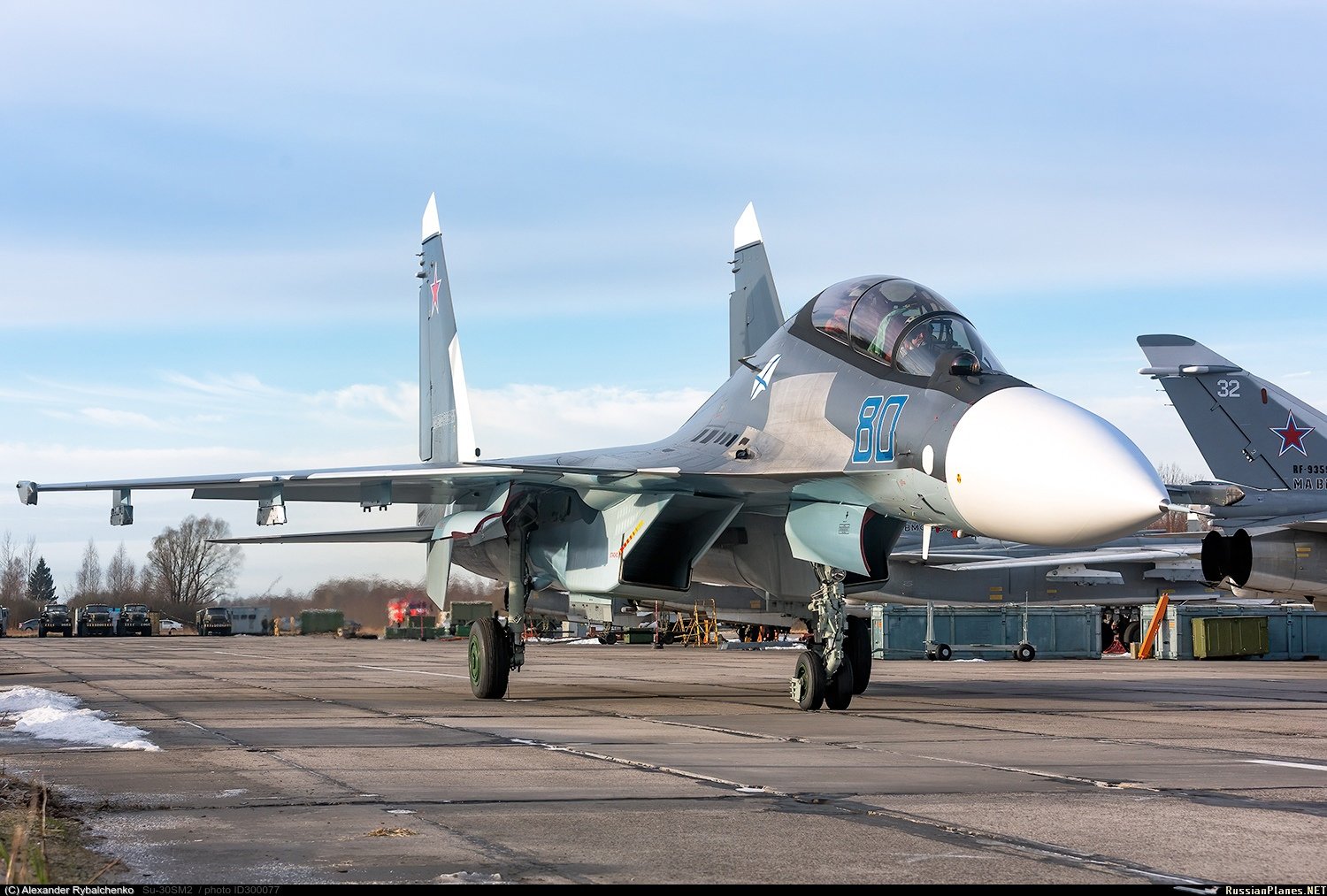Amid tensions running high between Russia and the United States-led NATO, the Russian Aerospace Forces (VKS) kicked off a series of tactical air exercises with its cutting-edge Su-30 combat aircraft.
The Baltic Fleet’s press office said on March 20 that more than ten crew of sophisticated Su-30SM and Su-30SM2 fighter planes began tactical flight rehearsals with bombing and missile strikes in Russia’s westernmost exclave of the Kaliningrad Region, TASS News Agency reported.
“During the drills, the pilots are exercising to destroy enemy military hardware columns, command posts and amassed manpower, military-industrial facilities, adversary aircraft, airborne and amphibious assault forces, and also to provide fire support to units of the Baltic Fleet’s army corps,” the press office said in a statement.
The report stated that the pilots are honing their maneuvering abilities during aerial combat, as well as their ability to conduct reconnaissance and carry out airborne gun and bomb strikes.
“In all, the crews of the fighter aircraft will need to strike over 20 various targets, launch airborne rockets and drop bombs,” the press office specified.

The drills, according to the statement, involve about ten aircraft and over 50 flight and ground crew members from a composite aviation regiment of the Baltic fleet’s naval aviation.
On the same day, however, the VKS had to scramble a Su-35E fighter jet to intercept two B-52H bombers flying over the Baltic Sea. The Russian National Control Defense center told reporters that these US Bombers were flying toward the Russian federation’s state borders.
However, the Russian side has not announced whether any contact was established between the US B-52H Bombers and the Russian Su-30 fighter jets conducting drills in the Baltic region.
Having said that, the regular drills conducted by both Russian and NATO allies over the Baltic underscore the region’s strategic importance.
Earlier, in September last year, allies Hungary, Germany, the Czech Republic, Italy, Türkiye, the United Kingdom, Estonia, Latvia, Lithuania, and Finland held the third Ramstein Alloy exercise in 2022. This was the first time the allies included air and surface-based Integrated Air and Missile Defense activities in the drills.
On its part, Russia has also conducted multiple drills since early 2022 in the Baltic region, testing the preparedness of its troops and readying them for missions in this strategic region where the two sides regularly face off against one another, albeit in a non-confrontational way.
The recent Russian air drills, however, are significant for multiple reasons. First, they come days after the Russian Su-27 Flanker was accused of spraying and damaging a US MQ-9 Reaper drone, forcing it to go down into the Black Sea.
And second, and invariably, the most significant part of these latest drills is that Russia’s newest and the most cutting-edge Su-30SM2 combat jets are pounding imaginary targets in the Baltic.
What Do We Know About The Su-30SM2?
The Russian United Aircraft Corporation (UAC) handed over a batch of new Su-30SM2 fighters to the Russian Ministry of Defense (RuMoD) in November 2022.
A statement released at the time said, “The new aircraft received an improved complex of on-board radio-electronic equipment. Thanks to the modernization carried out on the instructions of the Russian Ministry of Defense, the combat capabilities of aircraft have increased. In particular, the range of detection and identification of air targets has increased.”
The manufacturer has maintained that the new radar and new high-precision weapons would inflict strikes against air, land, and sea targets at several hundred kilometers. These features of the Su-30SM2 make its participation in the latest Baltic drills even more intriguing.
The Su-30SM2, formerly known as the Su-30SMD, is an upgraded version that makes use of the operational lessons the Russian Air Force learned from its air operations in Syria, as previously noted by the EurAsian Times.

The upgraded variant has an AL-41F-S1 engine with increased power, IRBIS N035 radar, better avionics, and contemporary armament.
Interestingly, the AL-41F-S1 engine and IRBIS N035 radar were first created for the Su-35S fighter jets. This has led military analysts to emphasize that the Su-30SM2 has capabilities that match the Su-35 combat jet, a VKS workhorse.
The Su-30SM2 is an attempt to converge to the maximum extent possible the Su-30 family with the Su-35 series to minimize logistics and maintenance overheads.
In July 2021, sources in the military department told Izvestia that the first Su-30SM2 would enter service with the Baltic Fleet by the end of the year. Previous reports indicated the 4th Guards Naval Assault Aviation Regiment and the 689th Fighter Regiment will be re-equipped with the newest fighters.
The introduction of these aircraft will replace the old Su-27 and significantly improve naval aviation’s combat abilities in the region.
- Contact the author at sakshi.tiwari9555 (at) gmail.com
- Follow EurAsian Times on Google News




